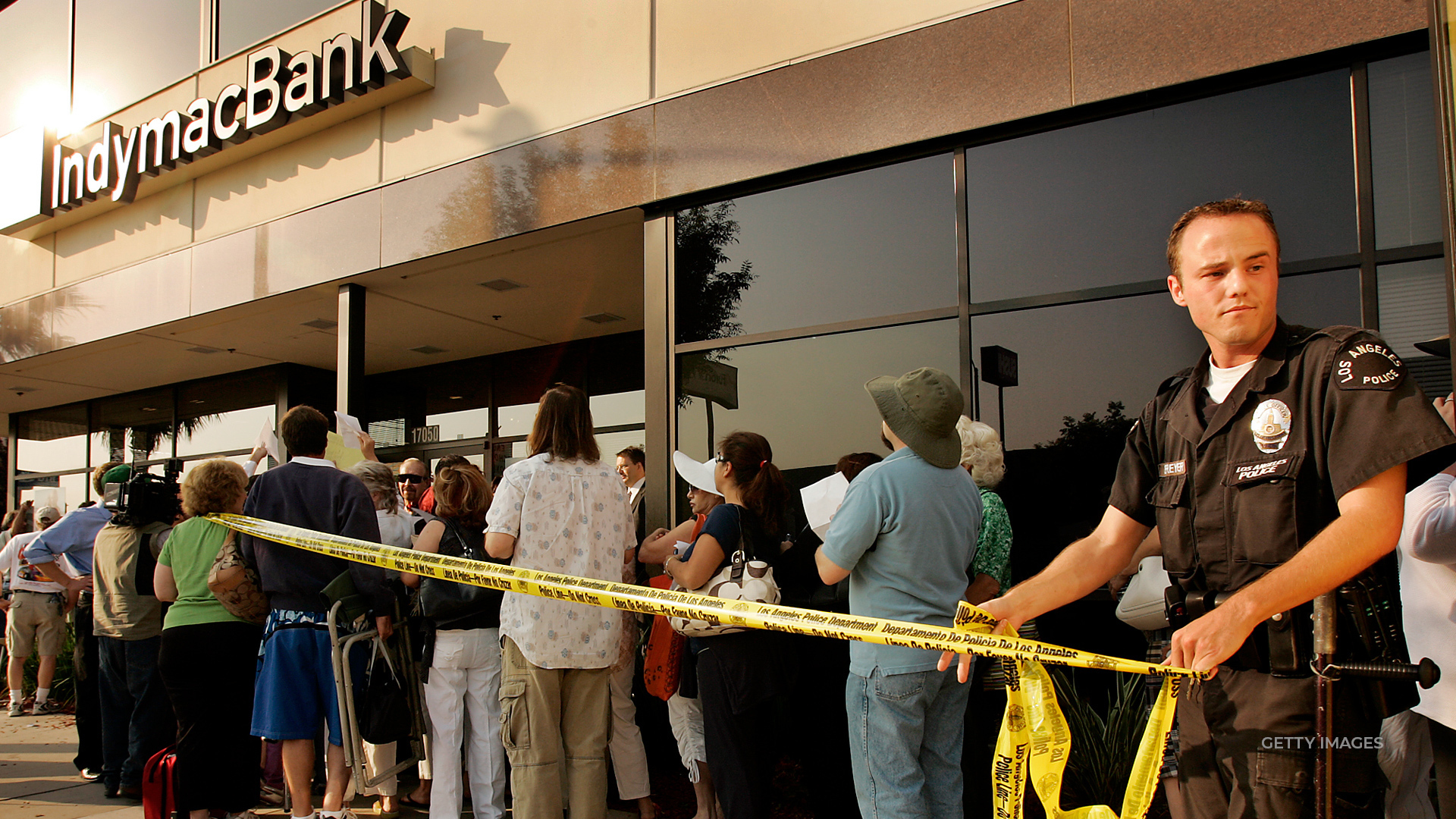
ERIC FOSTER, CO-FOUNDER, WOOP INSURANCE: If I thought that was a risk, I would have immediately mitigated the risk. That was not even a smidge of a thought in my head.
SIMONE DEL ROSARIO: SILICON VALLEY BANK MAY HAVE BEEN IN THE WEST. BUT IT’S NOT THE WILD WEST – WHERE BANK BANDITS COULD MAKE OFF WITH YOUR HARD-EARNED CASH.
I’D ARGUE NOW, WHEN PEOPLE DEPOSIT MONEY IN THE BANK, IT’S BECAUSE THEY BELIEVE THAT’S THE SAFEST PLACE IT COULD BE.
IT’S NOT IN AN INVESTMENT THAT COULD LOSE VALUE. IT’S NOT IN YOUR WALLET WHERE IT COULD GET STOLEN.
IT’S IN THE MODERN BANKING SYSTEM, THE BACKBONE OF OUR ECONOMY.
BUT BANKS DO FAIL AND PEOPLE DO LOSE MONEY.
GIVEN THE MEDIA STORM AROUND THE FAILURES OF SILICON VALLEY AND SIGNATURE BANKS, IT’D BE FAIR TO THINK, WOW THIS MUST NOT HAPPEN VERY OFTEN.
BUT IT HAPPENS NEARLY EVERY YEAR.
MORE THAN 500 BANKS HAVE FAILED SINCE THE YEAR 2000.
AND WHILE NOT A PENNY OF *INSURED* FUNDS HAS BEEN LOST IN THE HISTORY OF THE FDIC – DEPOSITORS DON’T ALWAYS GET *ALL* THEIR MONEY BACK.
WE ASKED THE FDIC FOR A LIST OF FAILED BANKS WHERE UNINSURED DEPOSITORS LOST MONEY. AND GOT A LIST OF 76 INSTITUTIONS DATING BACK TO 1993.
SOME OF THOSE LOSSES ARE RELATIVELY SMALL. OF THE MORE THAN 30 MILLION IN DEPOSITS AT FAILED ENLOE STATE BANK, ABOUT 461-THOUSAND DOLLARS OF CUSTOMER MONEY WAS UNINSURED. AND 61% OF THAT WAS LOST FOR GOOD.
BUT WHEN, FOR INSTANCE, THE COLUMBIAN BANK AND TRUST COMPANY WENT UNDER, SO DID 95% OF UNINSURED DEPOSITS TOTALING MORE THAN 25 MILLION.
SO WHY – IF BANK FAILURES HAPPEN NEARLY EVERY YEAR, ARE SVB AND SIGNATURE DEMANDING SO MUCH ATTENTION AND CONTAGION?
IT’S PARTLY BECAUSE OF THE SHEER SIZE OF THE BANKS.
THE TOTAL ASSETS OF THESE TWO FAILED BANKS NEARLY MATCH THE ASSETS OF ALL FAILED BANKS IN 2008.
BUT UNLIKE SOME BEFORE THEM, NO ONE LOST A DIME.
ERIC FOSTER IS THE CEO OF WOOP INSURANCE, A VENTURE-CAPITAL-BACKED STARTUP THAT BANKED WITH SILICON VALLEY BANK.
ERIC FOSTER: It became evidently clear that by Thursday night, there was a run on it. So then we were like, Alright, let’s see if we can get the money out because there is a run on and we don’t know what’s going to happen from that. But at that point, it was too late.
SIMONE DEL ROSARIO: WITH MILLIONS IN UNINSURED FUNDS LOCKED AWAY AND ABOUT 25 FULL TIME EMPLOYEES AWAITING PAYROLL – FOSTER WENT INTO FIX-IT MODE. BUT WITHIN DAYS THE FEDERAL GOVERNMENT ANNOUNCED CUSTOMERS WOULD GET FULL ACCESS TO THEIR FUNDS. AND WOOP INSURANCE DECIDED TO STICK WITH THE FEDERALLY-CONTROLLED SVB.
ERIC FOSTER: I still feel safe, if anything, I more so trust the American government for stepping in as they did, and the reality was like, did I have a few really crappy days? What is the downside outside of the handful of days and additional work for me, I did not lose a single dollar nor did my business lose a single dollar outside of the time spent? I think there should have been more tighter regulation on how those assets are managed. Like not to go into details. But why are you investing in a 10 year T note when you know, the average cycle span for a VC is 18 to 24 months when someone gets in their money to when they need to need a new flood of cash that is just flat out illogical to me.










